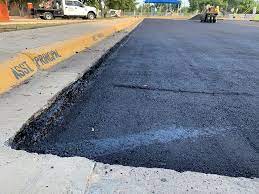Asphalt paving is a crucial aspect of infrastructure development, providing durable and versatile surfacing for roads, parking lots, driveways, and more. However, ensuring the longevity of asphalt surfaces requires careful planning, meticulous execution, and regular maintenance. From proper preparation to diligent upkeep, here are seven key steps to achieving long-lasting asphalt paving.
Proper Site Preparation for Asphalt Paving
The foundation of any successful asphalt paving project lies in thorough site preparation. This includes clearing the area of debris, vegetation, and any existing pavement. Additionally, proper grading ensures proper water drainage, preventing pooling and extending the lifespan of the asphalt surface. Compacting the soil subgrade is vital to providing a stable base for the asphalt layer.
The foundation of any durable asphalt pavement begins with the selection of high-quality materials. Opt for aggregates that are durable and properly graded to provide strength and stability. The asphalt binder should meet industry standards and be suitable for the specific application and climate conditions. Using inferior materials may save costs initially but can lead to premature deterioration and costly repairs in the long run.

Quality Material Selection
The quality of materials used in asphalt paving significantly impacts its longevity. Choosing high-quality aggregates and asphalt binder appropriate for the specific project requirements is essential. Opting for materials that meet or exceed industry standards ensures durability and resistance to environmental factors such as weathering, UV radiation, and heavy traffic.
Appropriate Asphalt Thickness
Determining the appropriate thickness of the asphalt layer is crucial for withstanding anticipated traffic loads and environmental conditions. Thicker asphalt layers offer greater strength and durability, reducing the risk of premature deterioration and structural failure. Consulting with asphalt paving experts or engineers can help in determining the optimal thickness based on factors like traffic volume and climate.
Proper Installation Techniques
The manner in which asphalt is installed significantly affects its longevity. Employing proper paving techniques, such as uniform compaction and smooth finishing, ensures a dense, even surface that can withstand heavy loads and resist deformation. Utilizing modern equipment and skilled labor during installation minimizes the risk of defects and extends the lifespan of the pavement.
Regular Maintenance and Repairs
Regular maintenance is essential for preserving the integrity of asphalt surfaces over time. Implementing a proactive maintenance plan that includes periodic inspections, crack sealing, pothole repairs, and sealcoating helps prevent minor issues from escalating into major problems. Timely repairs address damage promptly, preventing water infiltration and preserving the structural integrity of the pavement.
Proper Drainage Management
Effective drainage is critical for preventing water damage to asphalt surfaces. Poor drainage can lead to water pooling, which can weaken the pavement and accelerate deterioration. Installing adequate drainage systems, such as curbs, gutters, and proper sloping, helps redirect water away from the pavement, reducing the risk of moisture-related damage and prolonging the lifespan of the asphalt.
Routine Resurfacing and Rehabilitation
As asphalt surfaces age, they may require periodic resurfacing or rehabilitation to restore their appearance and functionality. Resurfacing involves applying a new layer of asphalt over the existing pavement, while rehabilitation may involve more extensive repairs, such as milling and overlaying. Implementing these measures at the right time can extend the life of the pavement and avoid costly reconstruction.
Conclusion
Achieving long-lasting asphalt paving requires careful attention to detail at every stage of the process, from site preparation to routine maintenance. By following these seven key steps and partnering with experienced professionals, property owners and municipalities can ensure the durability, safety, and aesthetics of their asphalt surfaces for years to come. Investing in quality materials, proper installation techniques, and ongoing maintenance not only extends the lifespan of the pavement but also reduces long-term costs associated with repairs and replacements.








Comments 1